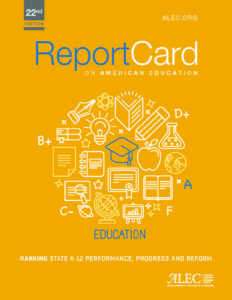
The coronavirus pandemic is a watershed moment for the future of healthcare and education: Brooklyn Roberts and Scott Kaufman
People are struggling. The coronavirus pandemic has upended our way of life, but technology has advanced tremendously in the last few decades. Conveniences such as food delivery services, video conferencing, and streaming services have made it all a bit more bearable.
But two key sectors have lagged on embracing new technologies — at least until now. COVID-19 has given us an opportunity to evaluate the way we provide healthcare and educational services in this country and why we haven’t been open to new options until now.
For instance, many states still have laws restricting the practice of telemedicine. Some states require an in-person relationship established before a patient can be treated through telemedicine. Some states limit telemedicine providers based on proximity to the patient, and some states limit the ability of telemedicine providers to prescribe medicines.
The restrictions are all based on old practice models and even older technology. Companies such as Doctor On Demand, which treat solely through telemedicine, have flourished in a time when we put ourselves at risk just by leaving our home. Direct primary care providers such as Forward and One Medical are also able to treat patients through both telemedicine and brick-and-mortar visits.
You can now consult a physician from the comfort of your home if you have a phone, tablet, or laptop with a camera. That physician can screen your symptoms and let you know if you need to see a provider in-person or if it is something he or she can treat remotely. This has been especially important during the current crisis. Telehealth providers are screening patients who believe they have COVID-19 symptoms and can recommend whether further testing is necessary.
It has also been a huge help for those who need mental health or substance abuse treatments. In a time when gathering for group therapy is not an option, using technology to communicate with large groups of people is helping keep people in the treatment they need without putting them at risk.
States that had regulatory barriers limiting the use of these technologies have been rapidly lifting them — if only temporarily. But those measures should become permanent. Because regardless of whether we are in the middle of a crisis, these measures make it easier and more convenient for patients to get treatment.
On the educational front, states have been struggling with the very idea of how to teach students outside of their traditional schools. The answer seems obvious to us: Embrace technology. But that turns out not to be so easy for our government-run educational system.
The Center for Reinventing Public Education is tracking the response to school closures in 82 districts that serve around 9 million students across the country. As of their last update on April 3, only 10 of the 82 districts were providing curriculum, instruction, and monitoring student progress digitally. The vast majority, 62 out of 82, were either providing only general resources or basic curriculum without instruction.
Even in states where digital options were previously available, there have been problems. States such as Oklahoma, Oregon, and Pennsylvania bafflingly shuttered their virtual schools along with their brick-and-mortar schools. Those states have since reopened the schools but are still restricting new students from enrolling.
Florida, to its credit, has opened its virtual schools to all its students and even students in other states.
But if state schools are unable or unwilling to provide digital options for their students at this time, then they should allow other providers to step in and fill the gap. Already, 15 states have said that it is unlikely students will return to school this year. We, as a country, can’t just sit around and let our children fall behind an entire year.
We’re learning from our mistakes. We’re never going back to the way things were before the pandemic. But that isn’t a bad thing. In healthcare and education, and in many other sectors, we will come out of this pandemic as a more resilient and better-prepared country than we were before.
Brooklyn Roberts is the director of the Health and Human Services Task Force at the American Legislative Exchange Council. Scott Kaufman is the director of the Education and Workforce Development Task Force at ALEC. The column originally appeared in the Washington Examiner.



